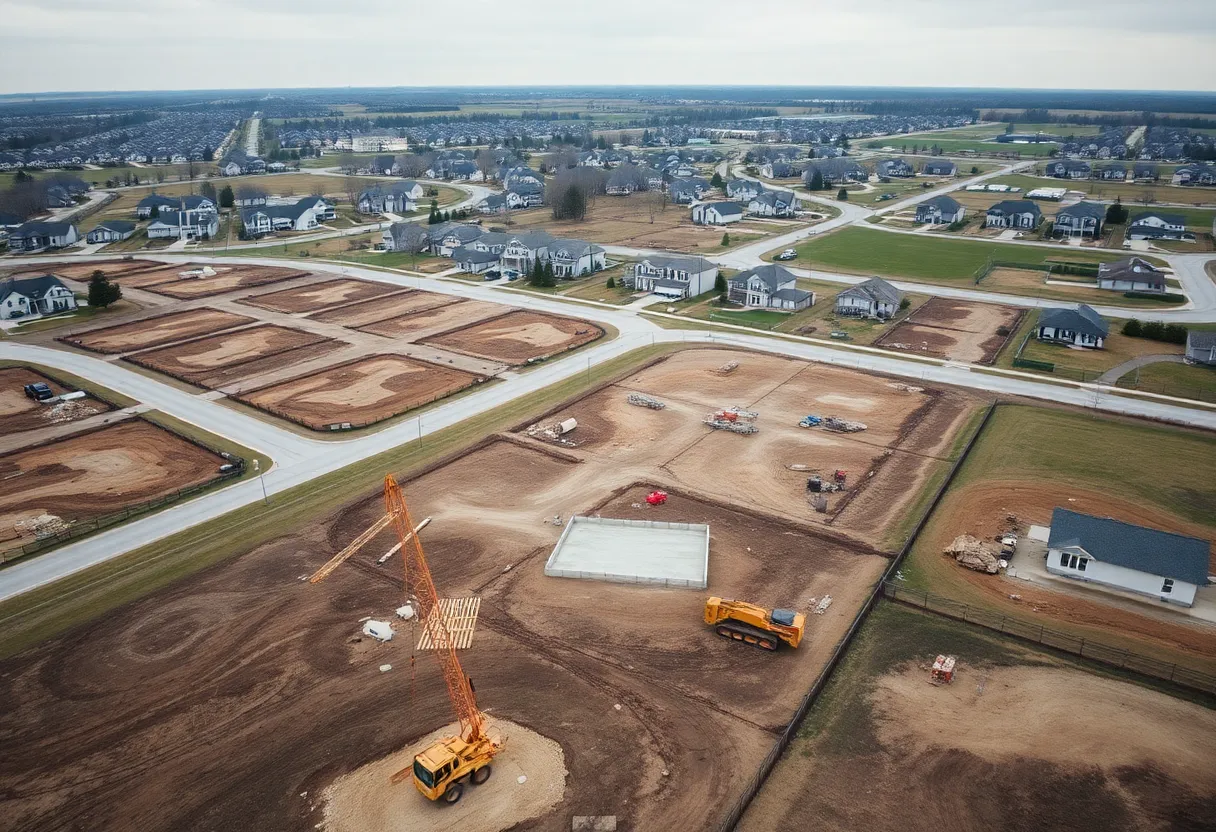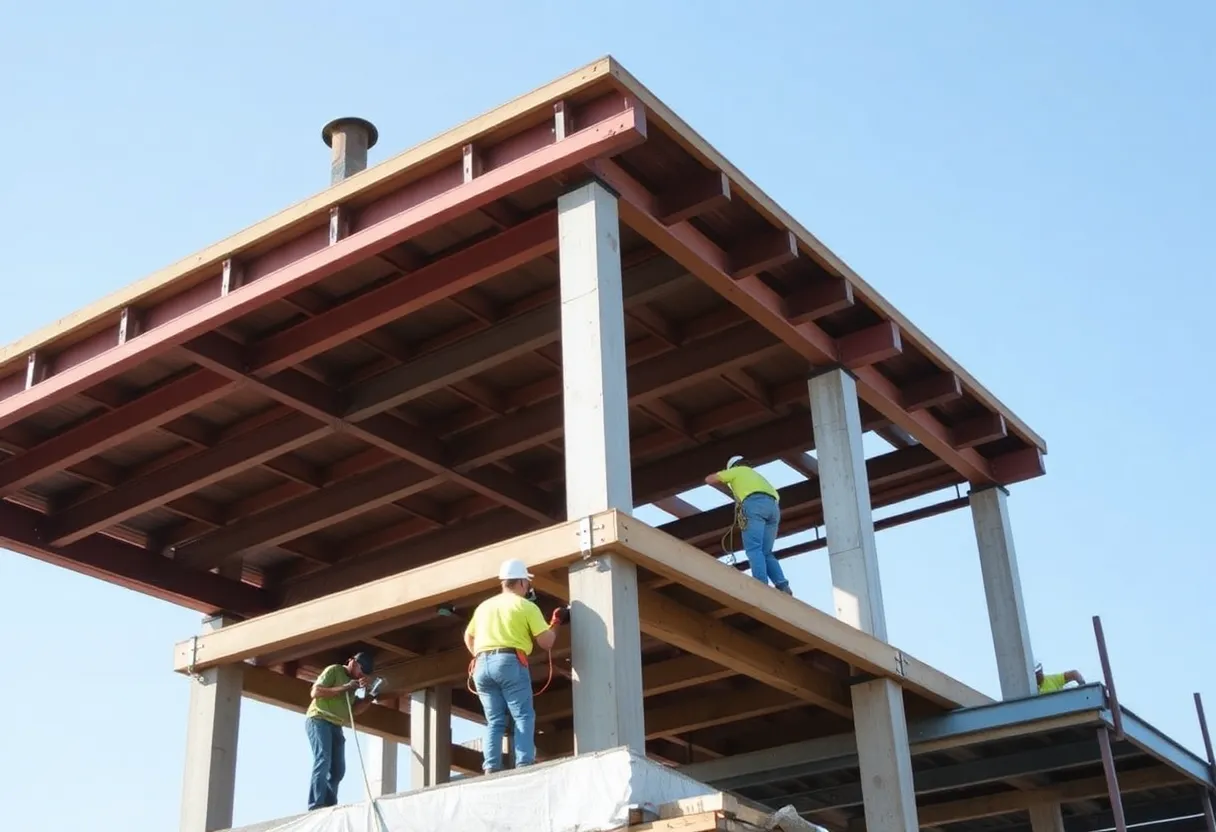, October 8, 2025
News Summary
The White House called on major government-controlled mortgage backers to encourage large homebuilders to accelerate construction, sparking questions about how that would work amid a softening housing market. Fannie Mae and Freddie Mac together guarantee a large share of U.S. mortgages, and any shift in their practices could affect construction finance. Experts say undeveloped lots often sit idle due to weak demand, higher building costs, labor shortages, zoning and permitting delays, and condo financing hurdles. Industry groups and regulators signaled attention, but no concrete programs were announced and analysts stress coordinated action is needed to boost supply.
President Urges Mortgage Giants to Push Homebuilders as Industry Faces Confusion and Slowdown
Key point: A social media request to two government-controlled mortgage firms to spur large builders has raised questions about how that would work amid a weak market, rising costs and regulatory hurdles.
The top-level ask from the White House that two major mortgage backers should help jump-start large homebuilders landed at a time when the housing market is slowing and builders face higher costs. The post claimed that builders are sitting on a large number of undeveloped lots and called on the mortgage firms to act, but it did not specify how the firms should proceed. The statement prompted an immediate response from the regulator overseeing those firms, who signaled attention to the matter, while industry groups and housing experts said the request left many practical questions unanswered.
Why the message matters now
Fannie Mae and Freddie Mac together back or guarantee more than half of residential mortgages in the United States, and they operate under federal conservatorship that began after the 2008 financial crisis. Discussions earlier in the year considered moving the firms toward privatization. Because of their scale, any change in their lending practices could influence construction finance and mortgage availability for new developments.
At the same time, the housing supply shortage remains a major concern. Analysts estimate a shortfall of several million homes compared with long-run demand, with one estimate putting the gap at 3.8 million in 2024. Fixing that gap at current building rates would take several years, and the South and Northeast show particularly acute regional shortages.
Market signals and statistics
Recent data show mixed signs: home prices remain elevated, with the median sale price near the mid-four-hundred-thousand-dollar range as of August, while inventory has increased year over year. Yet sales are down and builders are listing fewer new homes, reflecting weaker buyer demand. Nationwide, new housing starts plunged sharply in August, and the pipeline of approved lots without construction reached multi-decade highs, indicating many parcels have not moved to active building.
Builder sentiment has weakened, with survey measures at their lowest levels in nearly three years, and a growing share of builders reported cutting prices and offering sales incentives to attract buyers. Meanwhile, financing costs for mortgages and construction loans have started to ease modestly as markets price in potential central bank rate cuts later in the year.
Industry and expert reactions
National builder groups agreed that more construction is needed to improve affordability but said the solution requires work across government and the private sector to remove regulatory delays, ease material and labor shortages, and expand access to affordable financing. Trade group leaders stressed that overcoming zoning barriers and permitting red tape at the local level will be critical to speeding projects.
Housing economists pointed to weak buyer demand and rising construction costs as the main reasons many lots have not yet turned into houses, rather than deliberate withholding of land. Tariffs on building materials, tight availability of construction labor, and strict condo financing rules were cited as obstacles that slow or block projects, particularly multifamily and condominium development.
What role could mortgage backers play?
Observers outlined several possible actions the mortgage firms might take, such as creating or expanding loan products for new-construction buyers, streamlining approval processes, or improving financing pathways for condo projects. However, it remains unclear which tools would be effective or whether builders would be willing to ramp up production given current demand, cost pressures and underwriting requirements.
The federal regulator for the mortgage firms publicly noted attention to the request, but no concrete programs or changes were described. Stakeholders said any substantive shift would require careful design to avoid adding financial risk or creating unintended market distortions.
Context and outlook
The housing debate is unfolding against a backdrop of ongoing economic uncertainty, a partial federal shutdown that temporarily delayed routine data releases, and expectations that the central bank may ease policy later in the year. Analysts expect that lower borrowing costs would help builders and buyers over time, but they caution that more than one policy lever is needed to solve regional shortages and affordability challenges.
In short, the call for the mortgage firms to prod large builders has highlighted an existing policy puzzle: increasing supply is widely seen as the long-term fix for housing affordability, but immediate barriers — costs, labor, zoning, permitting and financing rules — make any near-term scaling up difficult without coordinated action among federal agencies, local officials and private developers.
What happened next
The regulator acknowledged the post and said it would look into the matter. Builder groups reiterated a willingness to work with government to boost housing production, while economists urged focus on reducing red tape, addressing material and labor constraints, and improving financing for complex projects such as condos. No new programs were announced at the time of reporting.
FAQ
Q1: What was asked of the mortgage firms?
A request was made for the major mortgage backers to take steps to get large homebuilders to increase construction activity, but the request did not outline specific measures.
Q2: Do these mortgage firms control most home lending?
Yes. Together they back or guarantee more than half of the nation’s residential mortgages and operate under federal oversight.
Q3: Are builders deliberately holding lots empty?
Many experts say lots remain undeveloped largely because of weak buyer demand, higher construction costs, labor shortages and local permitting rules, rather than a coordinated effort to restrict supply.
Q4: Could the mortgage firms speed construction?
They could potentially help through expanded loan products or faster approvals, especially for complex projects, but it is unclear what changes would be feasible, how builders would respond, or what risks might arise.
Q5: What else is needed to boost housing supply?
Industry leaders and economists point to zoning reform, faster permitting, more workers, lower material costs, and targeted financing tools as key components of any lasting solution.
Key features at a glance
| Feature | Detail |
|---|---|
| Request | Ask for major mortgage backers to encourage large builders to increase construction |
| Scale | Mortgage backers together guarantee more than half of U.S. residential mortgages |
| Market status | Home prices still elevated, sales down, builders reducing listings and cutting prices |
| Supply gap | Estimated millions of homes short versus long-run demand; several years to close at current pace |
| Main constraints | Permitting and zoning, higher material costs, labor shortages, financing rules |
| Potential tools | Expanded loan products, faster approvals, condo financing changes, regulatory reforms |
Deeper Dive: News & Info About This Topic
Additional Resources
- Reuters: Trump calls on Fannie Mae, Freddie Mac to get big homebuilders going
- Wikipedia: Fannie Mae
- Bloomberg: Trump call for Fannie, Freddie to spur building is a mystery
- Google Search: Trump Fannie Freddie spur building
- U.S. News: Trump calls on Fannie Mae and Freddie Mac to get big homebuilders going
- Encyclopedia Britannica: Fannie Mae
- Investing.com: Trump yet to decide on Fannie Mae, Freddie Mac IPO — Pulte says
- Google Scholar: housing supply Fannie Freddie 2025
- Newsweek: Donald Trump housing update
- Google News: Trump Fannie Mae Freddie Mac homebuilders
Author: Construction FL News
The FLORIDA STAFF WRITER represents the experienced team at constructionflnews.com, your go-to source for actionable local news and information in Florida and beyond. Specializing in "news you can use," we cover essential topics like product reviews for personal and business needs, local business directories, politics, real estate trends, neighborhood insights, and state news affecting the area—with deep expertise drawn from years of dedicated reporting and strong community input, including local press releases and business updates. We deliver top reporting on high-value events such as the Florida Build Expo, major infrastructure projects, and advancements in construction technology showcases. Our coverage extends to key organizations like the Associated Builders and Contractors of Florida and the Florida Home Builders Association, plus leading businesses in construction and legal services that power the local economy such as CMiC Global and Shutts & Bowen LLP. As part of the broader network, including constructioncanews.com, constructionnynews.com, and constructiontxnews.com, we provide comprehensive, credible insights into the dynamic construction landscape across multiple states.





